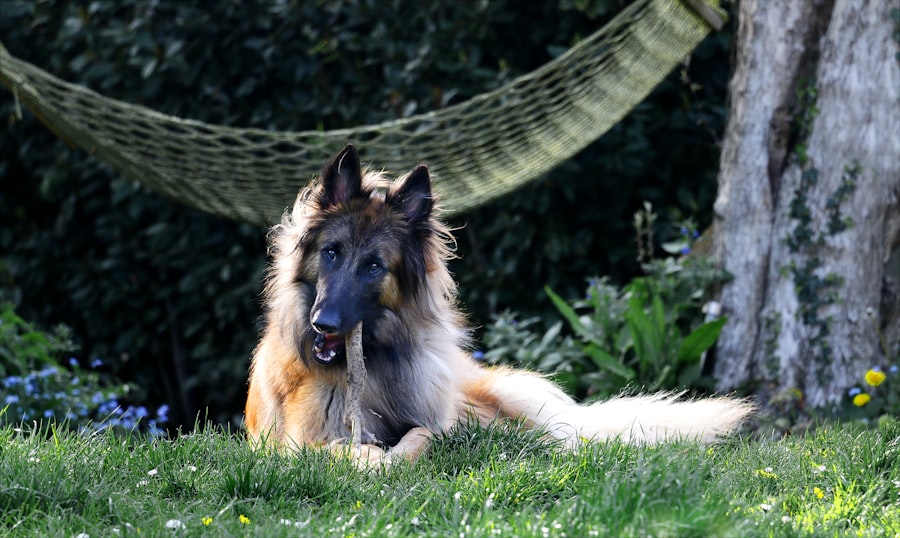Pawsitive Reinforcement: Top 10 Natural Treats Your Dog Will Love During Training

Positive reinforcement is a training method that rewards desired behaviors in dogs using positive stimuli, such as treats, praise, or toys. This approach is based on the principle that animals are more likely to repeat behaviors that result in pleasant outcomes. Positive reinforcement is an effective and humane way to train dogs, as it encourages them to learn and perform tasks willingly, without the use of force or punishment.
Using natural treats as rewards in positive reinforcement training is an effective method for encouraging good behavior in dogs. Natural treats are made from wholesome, high-quality ingredients without artificial additives, preservatives, or fillers. These treats are nutritious and provide a healthy way to reward dogs during training sessions.
This article will explore the benefits of using natural treats for training, discuss the top 10 natural treats for dogs, provide tips for incorporating natural treats into training, offer advice for choosing appropriate natural treats, and address potential risks and precautions when using natural treats.
Key Takeaways
- Pawsitive reinforcement is a training method that focuses on rewarding desired behaviors with treats and praise, rather than punishing unwanted behaviors.
- Using natural treats for training provides health benefits for dogs, as they are free from artificial additives and preservatives.
- The top 10 natural treats for dogs include options like freeze-dried liver, sweet potatoes, and carrots, which are both healthy and appealing to dogs.
- Incorporating natural treats into training involves using them as rewards for good behavior and timing the rewards to reinforce the desired actions.
- When choosing natural treats for your dog, consider factors such as the ingredients, sourcing, and your dog’s individual dietary needs and preferences.
- Potential risks of using natural treats include overfeeding and allergies, so it’s important to use them in moderation and monitor your dog’s reactions.
- In conclusion, pawsitive reinforcement and natural treats are important for training and maintaining a healthy, happy dog.
Benefits of Using Natural Treats for Training
Using natural dog training treats provides a wide range of benefits for both dogs and their owners. Firstly, natural treats are made from high-quality ingredients that are free from artificial additives, preservatives, and fillers. This means that they are not only delicious but also provide essential nutrients that contribute to your dog’s overall health and well-being.
By using natural treats as rewards during training, you can ensure that your dog is receiving a wholesome and nutritious snack that supports their dietary needs. Additionally, natural treats are often more palatable and appealing to dogs than artificial or processed treats. This makes them a highly effective tool for motivating and rewarding good behavior during training sessions.
Dogs are more likely to respond positively to training when they are offered a treat that they find irresistible, and natural treats fit the bill perfectly. Furthermore, using natural treats in pawsitive reinforcement training helps to strengthen the bond between you and your dog. By associating training with positive experiences and rewards, you can build trust and create a positive learning environment that fosters a strong and loving relationship with your furry companion.
Top 10 Natural Treats for Dogs

1. Freeze-Dried Liver: Freeze-dried liver treats are a popular choice for dog training due to their rich flavor and high protein content. They are made from pure, single-ingredient liver that is freeze-dried to preserve its natural nutrients and flavor.
2. Dehydrated Meat: Dehydrated meat treats, such as chicken or beef jerky, are another favorite among dogs. These treats are made from lean cuts of meat that are slowly dehydrated to create a chewy and flavorful snack.
3. Sweet Potato Chews: Sweet potato chews are a healthy and tasty option for dogs that enjoy chewing. They are made from natural sweet potatoes that are sliced and dehydrated to create a chewy texture that dogs love.
4. Carrot Sticks: Carrot sticks are a crunchy and low-calorie treat that is rich in vitamins and minerals. They are an excellent option for dogs that enjoy a satisfying crunch during training sessions.
5. Blueberries: Fresh or frozen blueberries make a delicious and nutritious treat for dogs. These antioxidant-rich fruits are small and easy to handle, making them a convenient option for training.
6. Green Beans: Cooked or raw green beans are a low-calorie and fiber-rich treat that can be used as a healthy reward during training. They are especially beneficial for overweight or obese dogs.
7. Salmon Treats: Salmon treats are packed with omega-3 fatty acids, which support skin and coat health in dogs. They are available in various forms, such as freeze-dried or baked, and are highly palatable to most dogs.
8. Cheese Cubes: Small cubes of natural cheese, such as cheddar or mozzarella, make a tasty and protein-rich treat for dogs. Cheese is often used as a high-value reward for training purposes.
9. Peanut Butter: Natural peanut butter (without xylitol) can be used as a delicious and versatile treat for dogs. It can be spread on toys or used in interactive feeders to provide mental stimulation during training.
10. Coconut Cubes: Coconut cubes are a unique and nutritious treat for dogs that enjoy the taste of coconut. They are made from fresh coconut meat and provide healthy fats and fiber.
How to Incorporate Natural Treats into Training
Incorporating natural treats into training sessions requires careful planning and consideration to ensure that they are used effectively as rewards. Firstly, it is important to select natural treats that are small in size and easy to handle, as this will allow for quick and convenient delivery during training. Treats should be broken into small pieces or cut into bite-sized portions to prevent overfeeding and to make them last longer during multiple repetitions of a behavior.
It is also essential to establish a consistent reward system when using natural treats in pawsitive reinforcement training. This involves timing the delivery of treats to coincide with the desired behavior, so that the dog understands the connection between their actions and the reward they receive. Treats should be given immediately after the dog performs the desired behavior to reinforce the association between the action and the reward.
Furthermore, it is important to vary the types of natural treats used during training to prevent boredom and maintain motivation. Offering a variety of treats with different flavors, textures, and nutritional benefits can keep your dog engaged and excited about training sessions. This can also help prevent your dog from becoming too fixated on one type of treat, making it easier to transition to other forms of rewards in the future.
Tips for Choosing the Right Natural Treats for Your Dog
When choosing natural treats for your dog, it is important to consider their individual dietary needs, preferences, and any potential allergies or sensitivities they may have. Look for treats that are made from high-quality ingredients without any artificial additives, preservatives, or fillers. Opt for single-ingredient treats whenever possible, as these are less likely to cause digestive upset or allergic reactions in sensitive dogs.
It is also important to select natural treats that are appropriate for your dog’s size, age, and chewing habits. For example, small or senior dogs may benefit from softer treats that are easy to chew, while larger or more active dogs may prefer tougher textures that provide a satisfying crunch. Consider your dog’s dental health when choosing treats, as some options, such as dental chews or crunchy vegetables, can help promote good oral hygiene.
Additionally, be mindful of the calorie content of natural treats when incorporating them into your dog’s diet. Treats should only account for a small portion of your dog’s daily caloric intake to prevent weight gain or nutritional imbalances. If your dog has specific dietary restrictions or health concerns, consult with your veterinarian before introducing new treats into their diet to ensure they are safe and appropriate.
Potential Risks and Precautions When Using Natural Treats

While natural treats can be a valuable tool for pawsitive reinforcement training, it is important to be aware of potential risks and take precautions to ensure the safety of your dog. One potential risk of using treats in training is overfeeding, which can lead to weight gain and other health issues over time. To prevent overfeeding, it is important to factor in the calorie content of treats when calculating your dog’s daily food intake and adjust their meals accordingly.
Another risk to consider is the potential for allergic reactions or digestive upset from certain ingredients in natural treats. Monitor your dog closely after introducing new treats into their diet to watch for any signs of allergies or sensitivities, such as itching, vomiting, diarrhea, or changes in behavior. If you suspect that your dog is having a negative reaction to a particular treat, discontinue use immediately and consult with your veterinarian for guidance.
It is also important to supervise your dog when giving them natural treats to prevent choking hazards or accidental ingestion of large pieces. Some treats may pose a choking risk if they are not properly chewed or broken into smaller portions before being given to your dog. Always monitor your dog while they are enjoying their treats and remove any small or sharp pieces that could pose a danger.
The Importance of Pawsitive Reinforcement and Natural Treats
In conclusion, pawsitive reinforcement is an effective and humane method for training dogs that focuses on rewarding desired behaviors with positive stimuli. Using natural treats as rewards in pawsitive reinforcement training offers numerous benefits for both dogs and their owners, including providing wholesome nutrition, motivating good behavior, strengthening the bond between you and your dog, and creating a positive learning environment. When incorporating natural treats into training sessions, it is important to select high-quality options that are appropriate for your dog’s individual needs and preferences.
Careful planning and consistent reward systems can help ensure that natural treats are used effectively as rewards during training. However, it is essential to be mindful of potential risks associated with using treats in training and take precautions to prevent overfeeding, allergic reactions, choking hazards, or other safety concerns. By understanding the importance of pawsitive reinforcement and making informed choices about the use of natural treats in training, you can create a rewarding and enjoyable experience for both you and your furry companion.
With patience, consistency, and the right selection of natural treats, you can help your dog learn new behaviors while strengthening your bond and promoting their overall well-being.


Recent Comments